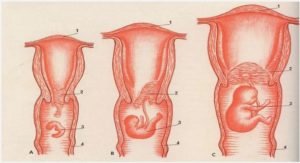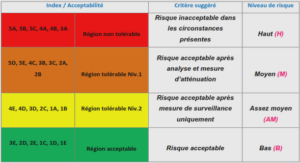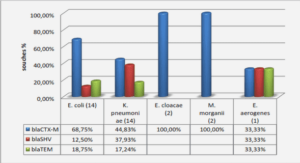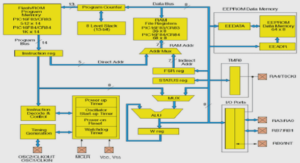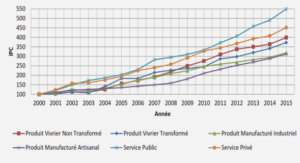The combination of Fibroscan with blood markers in the FibroMeterVCTE
INTRODUCTION
Non-alcoholic fatty liver disease (NAFLD), the liver manifestation of the metabolic syndrome linked to obesity and insulin resistance, affects 25% of the general population both in western and developing countries (1). NAFLD encompasses a large spectrum of liver lesions but the patient prognosis is mainly linked to the level of fibrosis which must therefore be accurately evaluated in clinical practice (2-4).
In this context, non-invasive tests of liver fibrosis (blood tests, elastography) position as very interesting tools to identify the subset of patients with advanced fibrosis and impaired prognosis among the large NAFLD population. In a recent study, we have shown that liver stiffness measurement (LSM) by Vibration Controlled Transient Elastography (VCTE) and the blood test FibroMeterV were the most accurate among nine fibrosis tests evaluated to diagnose advanced fibrosis in NAFLD (5).
The combination of fibrosis tests significantly improves their diagnostic accuracy (6-8), but this approach remains poorly evaluated in NAFLD. Only one study has evaluated the diagnostic accuracy of an algorithm based on the agreement between VCTE and the blood test NAFLD fibrosis score (NFS) (9). This algorithm provided excellent accuracy for the diagnosis of advanced fibrosis in NAFLD but disagreement between both fibrosis tests occurred in half of the patient who therefore required liver biopsy.
Other diagnostic algorithms combining fibrosis tests exist in chronic hepatitis C but they have never been evaluated in NAFLD. The Bordeaux algorithm is based on the agreement between VCTE and the blood test Fibrotest (6). The Sequential Algorithm for Fibrosis Evaluation (SAFE) combines the two blood tests APRI and Fibrotest (7). Such sequential procedure is relevant for large populations in clinical practice: by using a first-line test, it selects the subgroup of patients who require more complex and accurate procedures.
Finally, we have developed the new and accurate FibroMeterVCTE that synchronously combines in a single formula the blood markers of the FibroMeter V with VCTE (10).
The aims of the present study were: to evaluate in a large population of NAFLD patients the diagnostic accuracy of the fibrosis tests combinations previously developed in chronic hepatitis C; to improve the non-invasive diagnosis of advanced fibrosis in NAFLD by combining the best fibrosis tests in new practical algorithms; to evaluate the accuracy of these new algorithms in an intention-to-diagnose analysis.
New diagnostic algorithms
We first evaluated the five fibrosis tests used with their diagnostic intervals followed by liver biopsy in case of undetermined diagnosis (Figure s3a). All fibrosis tests provided similar accuracy and an excellent 93% rate of well-classified patients (Table 3).
However, the rate of liver biopsy requirement was high, ranging from 40% to 60%.
Despite it provided the best compromise between an excellent diagnostic accuracy (93.4%) and the lowest rate of liver biopsy requirement (37.9%), FibroMeterVCTE could appear quite difficult to perform in clinical practice as it requires both blood markers and VCTE, the latter being available only in specialized centers. We thus evaluated four sequential algorithms using a first-line fibrosis test (NFS, FibroMeterV2G, FibroMeterV3G or VCTE), followed by FibroMeterVCTE in case of undetermined diagnosis, and finally liver biopsy as last-line procedure if the diagnosis remained undetermined (Figure s3b).
Compared to blood tests or VCTE alone, these sequential algorithms strongly reduced the rate of liver biopsy requirement by 33-50% at the price of a slight 3% decrease in diagnostic accuracy.
DISCUSSION
As in the other causes of chronic liver diseases, an accurate evaluation of liver fibrosis is mandatory in NAFLD to decide the patient management. Liver biopsy remains the reference exam for this purpose but, because of its invasiveness, it can’t be proposed as first-line procedure to all NAFLD patients who represents 25% of the general population (1).
Several non-invasive methods exist with their own interests and disadvantages. Blood fibrosis tests can be performed by all physicians but the most accurate include specialized and costly blood markers. VCTE is very accurate, gives an immediate result while the consultation, but remains available only in specialized centers.
Other elastography methods included in Doppler-ultrasonographic devices have been developed but few data about their diagnostic accuracy and the best diagnostic cut-offs has been published.
In the present work, we have developed two algorithms for the practical diagnosis of advanced fibrosis in NAFLD. We though these algorithms by considering the resources available for the physicians (either VCTE or only blood tests as first-line examination) to ensure their feasibility in clinical practice and thus their broad application.
The strengths of our work are: 1/ the large number of patients included, 2/ the direct comparison for the first time in NAFLD of the previously published algorithms (SAFE, Bordeaux algorithm, Palermo algorithm), and 3/ the intention-to-diagnose analysis that takes into account LSM failure and thus evaluates algorithms in the “real life” conditions. Finally, by giving the best compromise between an excellent diagnostic accuracy and the lowest rate of liver biopsy required, the new FMV3G-VCTE and VCTE-FMVCTE algorithms position as the best procedures for the noninvasive diagnosis of advanced fibrosis in NAFLD.
Conclusions
The synchronous combination of Fibroscan with blood markers in the FibroMeterVCTE improves the non-invasive diagnosis of advanced fibrosis in NAFLD. In clinical practice, the sequential use of fibrosis tests (first: Fibroscan or FibroMeterV3G; then, if necessary: FibroMeterV CTE) significantly reduce the need for liver biopsy.
|
Table des matières
INTRODUCTION
MÉTHODES
RÉSULTATS
DISCUSSION ET CONCLUSION
BIBLIOGRAPHIE
LISTE DES TABLEAUX
LISTE DES FIGURES
TABLE DES MATIERES
MATERIEL SUPPLEMENTAIRE
![]() Télécharger le rapport complet
Télécharger le rapport complet

